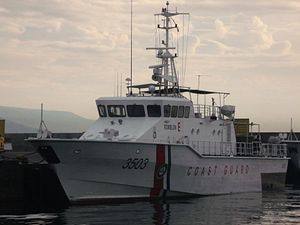The recent siege by Islamic State-linked militants in the southern Philippine city in Marawi is just the latest sign of what some regional observers, myself included, have long warned about: the growing threat of the Islamic State in Southeast Asia and the grave consequences it can have for states in the subregion (See: “ASEAN’s Islamic State Conundrum”).
The focus of foreign media outlets has tended to be on outside assistance given to the Philippines, which is no doubt important given the fact that Manila still has one of the weakest militaries in the region. But there are also ongoing, albeit modest attempts in the Philippines to boost the country’s capabilities. One of the examples is the Philippine Coast Guard (PCG), which is part of a wider trend in the region of the increased emphasis on coast guards (See: “Assessing Malaysia’s Coast Guard in ASEAN Perspective”).
The historical evolution of the PCG, which officially dates back to its founding back over a century ago with shifting designations and roles, is interesting in and of itself. And though its capabilities are still quite limited and familiar challenges still remain, there have been attempts to boost them in recent years dating back to former president Benigno Aquino III, where it saw a rise in funding, personnel, as well as equipment with the help of countries such as Japan and the United States.
While it is too early to assess the degree to which we have seen continuity with respect to that under Philippine President Rodrigo Duterte given that he is just over one year into his six-year term, there is little doubt that the Marawi siege, combined with the greater emphasis on trilateral cooperation with Malaysia and Indonesia in the Sulu-Sulawesi Seas, has catalyzed Manila’s emphasis on its coast guard capabilities (See: “Confronting Threats in the Sulu-Sulawesi Seas: Opportunities and Challenges”).
Perhaps the clearest illustration of this was last month, when the PCG took over security operations for all seaports in Mindanao from the Maritime Industry Authority and the Philippine Ports Authority under an order issued by the Department of Transportation. The order is expected to remain in force at least until martial law in Mindanao is lifted.
In one other notable development, apart from the trilateral patrols with Indonesia and Malaysia that have dominated the headlines, to further reduce the risks for transiting ships, the PCG has also established a Recommended Transit Corridor (RTC) between the Moro Gulf and the Basilan Strait, which would be monitored heavily by nearby law enforcement units.
This week, Commodore Joel Garcia, who is currently the officer-in-charge of the PCG, also said that amid fears of a potential spillover of the terror threat to other parts of the Philippines in spite of these moves, the organization could set up a new regional office in Negros Island Region (NIR), along with other infrastructure like a training center and additional stations in southern Negros Occidental. That came as no surprise. Considering that Negros lies close to Mindanao and straddles the Sulu Sea, it would enable the PCG to react faster to threats.
These measures have been paired with a stricter implementation of previous policies that may not grab as many headlines but are nonetheless crucial from a security standpoint. To take just one example, the PCG has been tasked with getting stricter in terms of ensuring ships comply with its Safety, Security, and Environmental Numbering System.
Of course, it is still early days in all this, and the efficacy of these measures remains to be seen. During the release of a biennial update on the status of piracy in Asia this week, Masafumi Kuroki, the executive director of the Regional Cooperation Agreement on Combating Piracy and Armed Robbery Against Ships in Asia (ReCAAP), rightly pointed out that it was no coincidence that we have seen no abductions reported in the area over the past two months.
But on the other hand, as we have seen in the case of the Malacca Straits, another major waterway in the region, these figures can often fluctuate during various reporting periods due to various factors other than the level of enforcement by states. It will probably require a few more reporting cycles before we are able to truly assess things.
It is also important to emphasize that the PCG’s capabilities still remain quite limited, with familiar problems including corruption still existing and continuing to periodically surface publicly. And though boosts continue to come in with the help of regional partners – with the Maritime Safety Capability Improvement Project with Japan being a case in point – there remain concerns about the institution’s bandwidth.
Commodore Joel Garcia, the Coast Guard officer-in-charge, foreshadowed some of this earlier this month when he addressed the issue of whether the PCG would be able to handle maritime emergencies with all the additional responsibilities it has to fill in Marawi. Not unlike neighboring Southeast Asian states, a key challenge for the Philippines remains how to confront manifold challenges with the limited resources it still has.

































